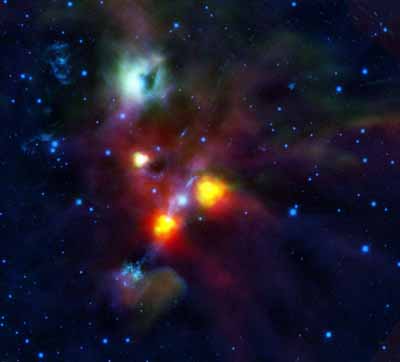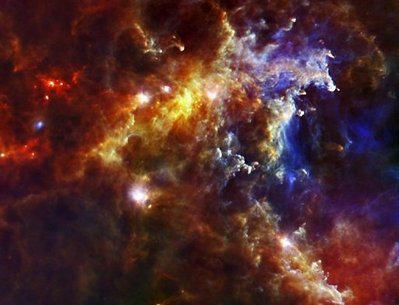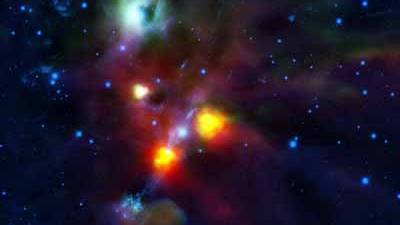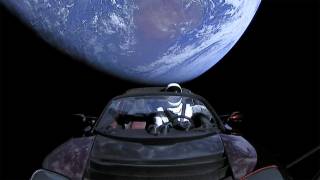"Impossible" Star seen by Euro space telescope
Source: space.com
A vast hole in space has been unexpectedly discovered in a part of the universe thought to be packed with a cloud of dense gas and dust – the latest in a string of cosmic finds by the European Herschel infrared space telescope.The surprising hole in space has provided astronomers with a new glimpse at the end of the star-forming process.
"No one has ever seen a hole like this," said study team member Tom Megeath of the University of Toledo in Ohio. "It’s as surprising as knowing you have worms tunneling under your lawn, but finding one morning that they have created a huge, yawning pit."

NGC 1999 is the green tinged cloud towards the top of the image. The dark spot to the right was thought to be a cloud of dense dust and gas until Herschel looked at it. It is in fact a hole that has been blown in the side of NGC 1999 by the jets and winds of gas from the young stellar objects in this region of space.
Credit: ESA/HOPS Consortium

Cloud associated with the Rosette Nebula, a stellar nursery about 5,000 light-years from Earth. The formation of new stars in galaxies like the Milky Way has declined five-fold in the last three billion years, initial findings of the European Space Agency’s Herschel telescope showed. Photo:/AFP
Stars are born in dense clouds of dust and gas, and while jets of gas have been spotted coming from young stars, the process of how a star uses this gas to disperse surrounding debris and emerge from its birth cloud has not been understood.
This latest discovery by Herschel, an infrared space telescope built by the European Space Agency, may be an unexpected step in the star-forming process.
A cloud of bright, reflective gas, known to astronomers as NGC 1999, is located next to a black patch of sky. For most of the 20th century, these black patches were understood to be dense clouds of dust and gas that block light that would normally pass through.
As Herschel’s infrared eye looked in the direction of NGC 1999 to study nearby young stars, the cloud continued to look black, even though the telescope’s infrared technology is designed to penetrate through such dense cloud material. This meant that either the cloud was immensely dense, or Herschel had happened upon a previously unexplained phenomenon.
Astronomers continued their investigation using ground-based telescopes and found the same results when looking at the patch of gas. This led to the conclusion that the patch looks black not because it is an extremely dense pocket of gas, but because it is truly empty – something had blown a hole through the cloud.
The astronomers think the hole must have been opened when the narrow jets of gas from some of the young stars in the region punctured the sheet of dust and gas that forms NGC 1999. The powerful radiation from a nearby mature star may have also helped to create the hole, researchers said.
Whatever the exact cause of the hole may be, the discovery may be an important glimpse into the way newborn stars shake off their birth clouds that helps astronomers develop a better understanding of the entire star-forming process, researchers said.
Herschel is the largest and most powerful infrared telescope in space today. The European Space Agency launched the observatory into orbit in May 2009.
Article from: Space.com
Herschel space telescope (2007)
Video from: YouTube.com






















